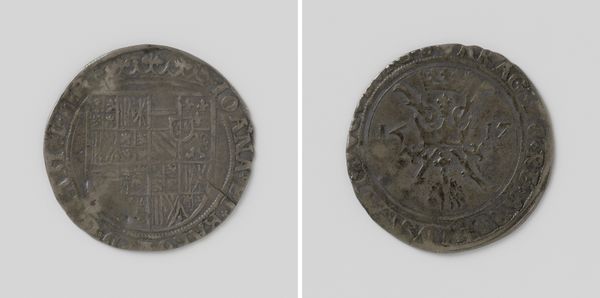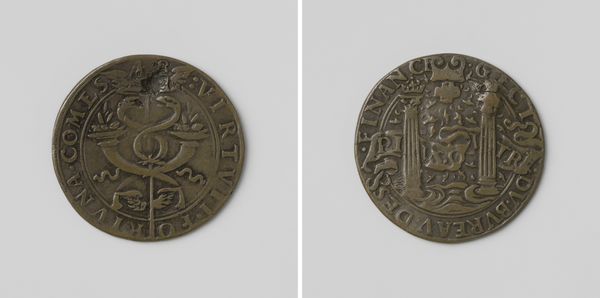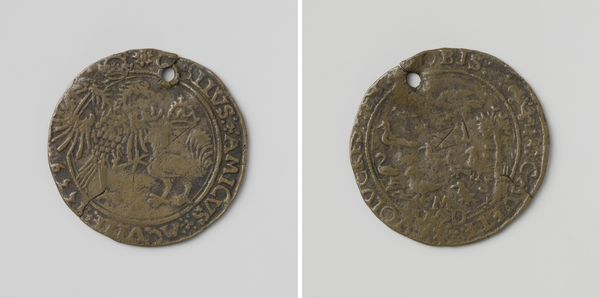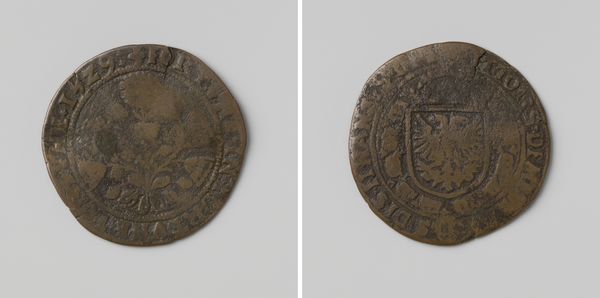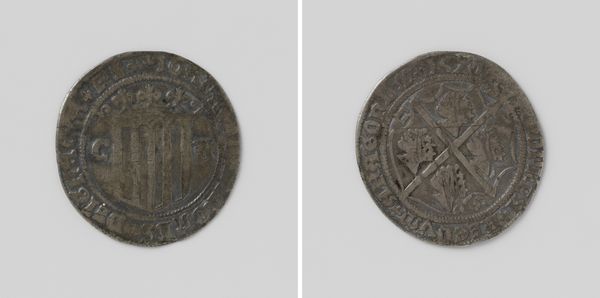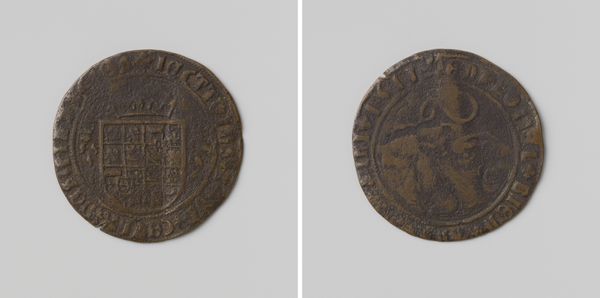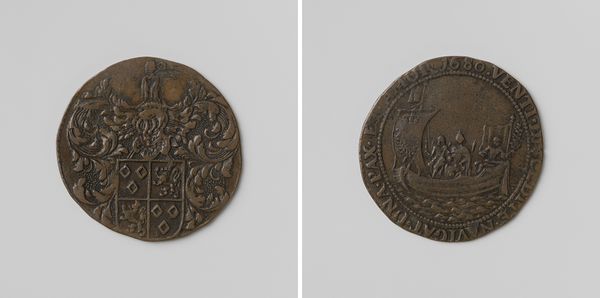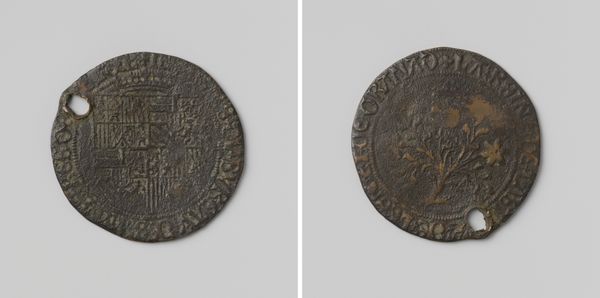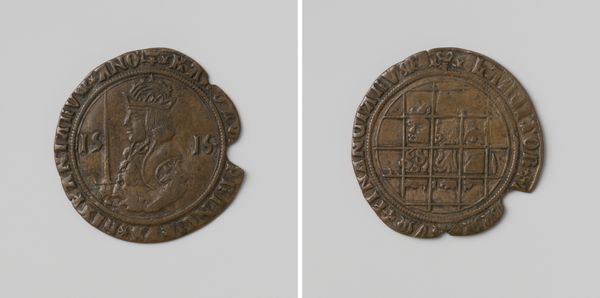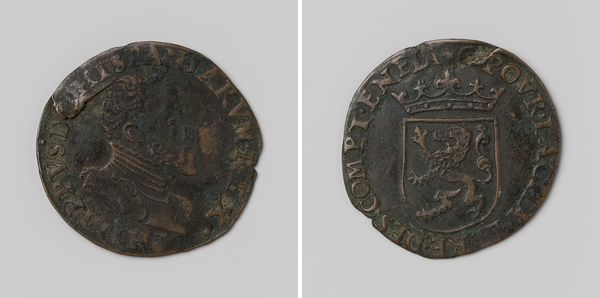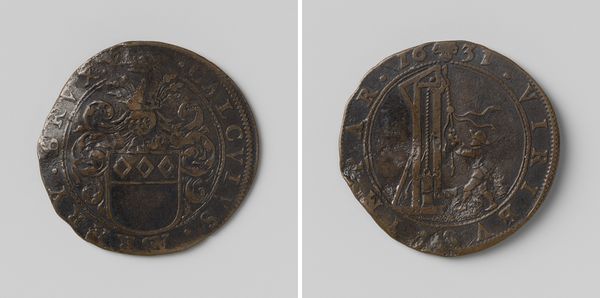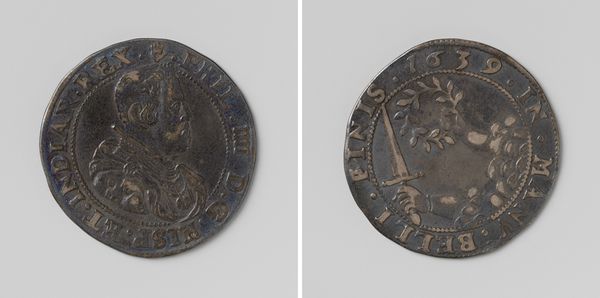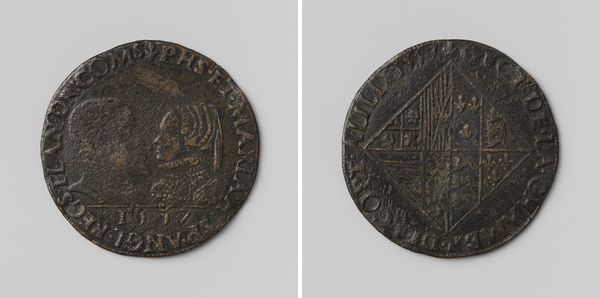
Groningen onder de heerschappij der Habsburgers gebracht, ter ere van Maria van Hongarije, landvoogdes der Nederlanden 1536
0:00
0:00
print, metal, relief
#
portrait
# print
#
metal
#
sculpture
#
relief
#
11_renaissance
#
northern-renaissance
Dimensions: diameter 2.8 cm, weight 4.21 gr
Copyright: Rijks Museum: Open Domain
Curator: Today, we're looking at a 1536 Northern Renaissance print from an anonymous artist, currently held in the Rijksmuseum: "Groningen onder de heerschappij der Habsburgers gebracht, ter ere van Maria van Hongarije, landvoogdes der Nederlanden"—which translates to "Groningen brought under the rule of the Habsburgs, in honor of Maria of Hungary, Regent of the Netherlands." Editor: It's hard not to feel an immediate sense of... weightiness looking at this. Both literally, in its materiality, and figuratively, with that complex imagery hammered onto the metal. Curator: Indeed. This metal relief showcases intricate compositional symmetry. Notice the carefully balanced lettering around the edges of both sides. The central motif is bookended by text in both frames. Editor: But that balance, the order...it feels imposed, right? Look at the historical context. Maria of Hungary, representing Habsburg power, taking control of Groningen. This wasn’t some neutral exchange, but an exertion of dominance, suppressing local governance, and influencing women’s limited political sphere. The relief functions less as commemoration and more as symbolic legitimization. Curator: I appreciate your emphasis on sociopolitical narratives and the historical context that influenced artistic creations, yet I must assert that to purely look at subject is a restrictive viewing lens, it’s an artwork rooted in formalism. I cannot neglect the symmetry present in both sides of the coin or relief, the central axes intersect and give way to visual meaning-making outside any societal and historical narrative. The semiotics embedded within these aesthetic patterns also tells a story. Editor: True, the formal elements cannot be overlooked. The patterns act almost as a kind of visual propaganda, reinforcing the established hierarchy. However, to ignore the lived realities behind the artwork feels incomplete to me. Even something as basic as metal medium is interesting; this image, repeated on numerous coin/reliefs acts almost as an early propaganda disseminated en masse to reinforce imperialistic control. Curator: Fair enough. Considering that function alongside Maria of Hungary offers additional insights. But one can look also at the technical construction, as a formal consideration to admire craftsmanship of its time... The print represents skill in detail. Editor: It’s a dance, isn’t it? The detail—the textures and emblems—can signify craft for its own sake or an exertion of Habsburg visual authority. It’s what makes works like this remain endlessly engaging. Curator: I find myself agreeing, both our perspectives are not at odds, they work towards establishing different relationships that help shape how one sees an image from its patterns to its cultural value. Editor: A richer appreciation, definitely.
Comments
No comments
Be the first to comment and join the conversation on the ultimate creative platform.
